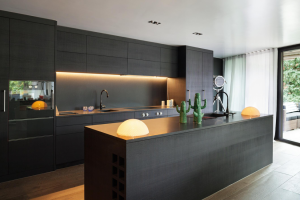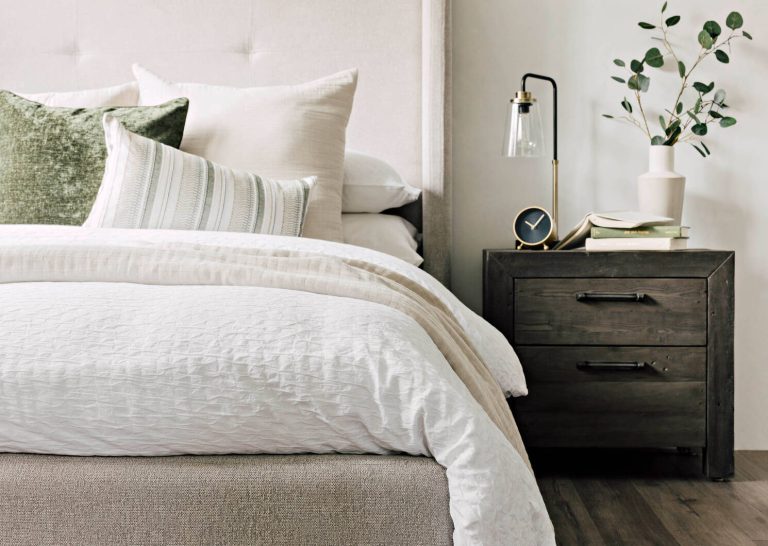
Creating a harmonious and functional bedroom space is crucial for a restful night’s sleep and an organized environment. The way we arrange furniture in our bedrooms can significantly impact both the aesthetics and functionality of the space. Whether you have a sprawling master suite or a cozy guest room, knowing how to strategically place your bedroom furniture can transform your room into a tranquil retreat. Here, we provide detailed guidelines to help you organize your bedroom furniture effectively.
Understanding the Space
Before you begin moving furniture around, take a moment to understand the dimensions and layout of your bedroom. Measure the room’s width, length, and height. Note the position of doors, windows, and closets. This will not only help in determining where each piece of furniture can fit but also assist you in choosing furniture pieces that suit your room’s dimensions and layout.
The Bed: The Focal Point
The bed is the most significant piece of furniture in the bedroom and often serves as the focal point around which the room’s other elements revolve. Here are a few tips for positioning your bed:
1. Central Placement: Ideally, position the bed so that it is the central element you see when you enter the room. This grants the bed its rightful prominence and creates a balanced appearance. If possible, place the bed against the longest wall.
2. Access and Symmetry: Ensure that there is ample space on both sides of the bed. This not only allows for easy access but also creates a symmetrical look, which can be visually appealing. Side tables or nightstands on either side can enhance this symmetry.
3. Window Considerations: While placing the bed beneath a window isn’t ideal due to outlet accessibility and potential draft concerns, it can sometimes be the best option for some layouts. In such cases, try to ensure the window treatments are easy to use and remove any obstructive elements.
4. Avoid Disturbances: Try to avoid placing the bed directly adjacent to doors leading to bathrooms or hallways, as it can become a high-traffic area and disrupt relaxation.
Nightstands: Functional Companions
Nightstands are essential for convenience, offering a place to keep nighttime necessities within arm’s reach. Here’s how to select and position your nightstands:
1. Proportional Size: Choose nightstands that are proportionate to the bed. Typically, the height of the nightstand should be nearly equal to the top of the mattress for aesthetic harmony and convenience.
2. Balance in Pairing: If space allows, a pair of nightstands can create balance and provide double the storage. However, if space is limited, a single nightstand or wall-mounted shelf can suffice.
3. Functional Decoration: Use the nightstands for lighting, as lamps add both functionality and style while also creating ambient lighting. Consider keeping them clutter-free with minimal decorations to maintain a clean look.
Dressers and Wardrobes: Space Savers
Dressers and wardrobes are pivotal for storage, but their placement requires careful consideration to maintain an open and airy feel in the bedroom.
1. Maximize Flow: Position dressers and wardrobes against walls with fewer interruptions from doors or windows to maximize floor space openness and traffic flow.
2. Accessible Organization: Aim for easy drawer access to ensure that clothes retrieval and organization are hassle-free.
3. Vertical Consideration: If floor space is limited, consider taller dressers to make use of vertical space. This can also help in freeing up floor space for other furniture.
Additional Seating: If Space Allows
If your bedroom is spacious enough, consider adding a seating area. This can take the form of a small armchair, a window seat, or a cozy reading nook. Here’s how to do it:
1. Complementary Furniture: Choose seating that complements your bed’s style and color scheme to maintain a cohesive look.
2. Placement and Purpose: Position seating near windows to enjoy natural light or as a division between sleeping and dressing areas, depending on room layout and personal preference.
3. Multifunctionality: Opt for a bench with storage at the foot of the bed or under a window to enhance functionality without sacrificing style.
Harmonize with Accessories
Finally, accessories can unify the bedroom and enhance its overall appeal. Consider rugs, curtains, and other accents that complement your furniture arrangement.
1. Anchor with Rugs: Use an area rug to anchor the room and add warmth. Ideally, it should extend at least halfway under the bed and slightly beyond the sides.
2. Cohesive Color Schemes: Coordinate bedding, curtains, and accessories to create a harmonized color palette that reflects your style and promotes relaxation.
3. Wall Decor: Use wall art above the headboard to draw attention upward and create a visually pleasing effect.
Conclusion
Arranging bedroom furniture doesn’t have to be intimidating. With these guidelines, you can create a space that is both functional and aesthetically pleasing. By organizing your bedroom furniture thoughtfully, you craft an environment that fosters relaxation and efficiency. Remember, your bedroom is your sanctuary, and it should reflect your personal taste while meeting your practical needs. Whether starting fresh or simply rearranging, let these guidelines inspire you to transform your bedroom into a comforting haven.













